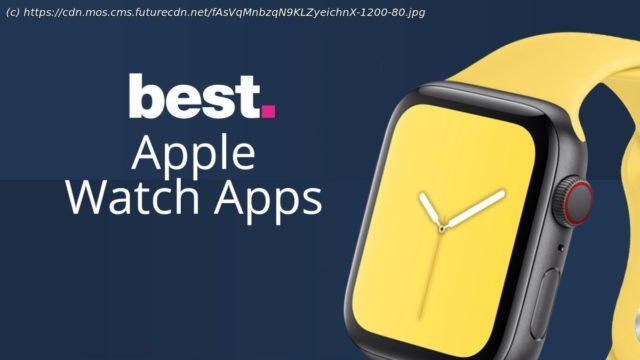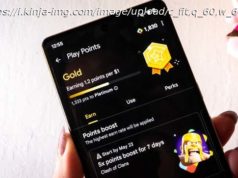Our list of the very best Apple Watch apps for fitness, sleep, travel and more.
The best Apple Watch apps keep changing, as new apps keep launching and old ones are updated or improved, and this is testament to how rich the Apple Watch app scene is. It wasn’t always like that. Not too long ago, it seemed as if the Watch had lost its sparkle, with many big-name apps either languishing or being pulled from the Watch altogether – but now it seems that things are much more vibrant in the Watch app space. You see, the problem was one of function – app developers spending too much time wondering ‚could we make an Apple Watch app?‘ and not ’should we…?‘ But Apple has pushed to improve the situation, with a big step coming with the arrival of an App Store directly on the Apple Watch with watchOS 6. In the years since then, the quality of Apple Watch apps has only improved, and while the selection isn’t as rich as for the iPhone, it’s the healthiest app ecosystem for a wearable. So whether you’ve recently strapped on an Apple Watch 7 or are rocking an older Apple Watch, apps can help you get more out of it, and there are plenty to choose from. We’ve made making that choice easier, as we’ve highlighted the very best Apple Watch options. Our favorite apps – the list of which is ever-growing – exist because they’re useful, or because they’re entertaining, or because they make your life that little bit better. In this round-up you’ll find apps for podcasting and procrastinating, for getting fit and getting stuff done, for messing around and for sorting stuff out. So whether you’re new to watchOS or just want to refresh your stock, dive in and start getting the most out of your Apple Watch, and make sure to check this article regularly, as we’ll add a new app every couple of weeks, highlighted below. There are many water intake trackers on the App Store, but Thirstic – ahem – drinks differently. That’s because it learns the patterns of your life and monitors the weather conditions to calculate a daily dynamic water intake goal. So if you go to the gym on a Monday, Wednesday, and Friday, Thirstic will learn that and adjust your hydration targets and notification frequency accordingly; if the days get hotter, Thirstic will take that into account too. It’s a clever idea, and there’s some more good thinking on show here: the app doesn’t send your data to remote servers, but uses your Watch’s integration with the Health app on your phone instead. You can also fine tune the parameters to suit your own preferences, so for example you can disable the weather forecast integration or make the activity sensing more or less sensitive. There are no ads, and the interface is simple, straightforward, and most importantly of all, fast and easy to use. There’s also a good selection of charts and data when you open up the iPhone app. Thirstic is free to try and then you can choose between a monthly, annual or lifetime subscription. At the time of writing, an annual subscription is $7.99 / £7.49 / AU$12.49. There’s no denying that the main thrust of the Apple Watch since the second model is for fitness: it’s packing GPS, heart rate, water resistance and improved sensors to make the most of the fact people like to work out with this thing – it even connects to gym equipment. This list of Apple Watch fitness, running, wellbeing and health apps are nearly all must-have – if you’re going to do one thing with your new Watch, use it to become a healthier you in mind and body. Tempo is popular with runners and walkers thanks to its intelligent analysis and excellent Apple Watch integration: it can get data from any fitness tracking app that logs data to Apple’s Health app, and then provide analysis of your performance. We’re pleased to see that the app also works for wheelchair users. Earlier this year the app added Personal Bests to show you your fastest times, and in the latest update Tempo has added Goals. Goals enable you to set a distance goal, and that goal can be for a single workout or for multiple ones. So for example if you’d like to follow the lead of The Proclaimers to walk 500 miles and then walk 500 more, you can set that goal in Tempo and it’ll track your progress even if you use other apps to monitor your walk or run in real time. The app enables you to tag your workouts in all kinds of ways: you can even see if a particular pair of running shoes have affected your performance. You can also add Tempo calculations to many of your Apple Watch faces so you can see your progress. Like most fitness tracking apps Tempo is subscription-based, but unlike many there isn’t a confusing range of options: there’s a single subscription plan of $9.99 / £9.49 / AU$15.99 per month. Here’s an interesting one: the Lumen app is designed to connect to Metaflow’s own health tracker, also called Lumen. It uses your breathing to identify what your body is up to, and it does that by getting you to inhale, hold your breath for ten seconds and then exhale fully. Lumen will then calculate your CO2 and tell you whether you’re mostly burning fat or carbohydrates. You can then use the app to identify the optimal diet, workout and sleep schedule to get the results you want. The Watch app does three things: it provides information from the Lumen tracker, it enables you to log your carbohydrate intake, and it can set your daily ‘carbs budget’ if your program requires low carb days. It’s impressive stuff, but it’s also expensive: the three subscription offers are a three-month ‘metabolism booster’ for £199 (around $275/AU$375), a six-month ‘advanced fat burn’ for £249 (roughly $340/AU$470), and a twelve-month ‘optimal health’ for £299 (approximately $410/AU$565), but those prices also include the Lumen device itself. After the three, six or twelve-month period expires, all three plans move to a £19 (roughly $25/AU$35) per month subscription. There’s a 30-day risk-free trial, though, so if you decide Lumen isn’t for you then you can return the sensor and get your money back. How fast is your arm? If you play ball or racket sports, if you’re a golfer, a frisbee fan or a hockey player, Arm Speed Analyzer can tell you how fast you can move and how quickly you accelerate. That means you can use it for golf swings and tennis serves, baseball or cricket pitching, frisbee throwing, hockey stick swinging, or anything else that involves speedy throwing, swinging, sweeping or hitting. Arm Speed Analyzer claims to be the most accurate speed tracking app that uses your Apple Watch’s accelerometer to track speed and acceleration. Using the app is fast and simple. It shows you four key pieces of information: your real time speed and acceleration, your most recent speed and acceleration, your personal best top speed and your previous session’s top speed. The app also records your history so you can go back and see how much you’ve improved over time and how consistent your speeds have become. Although the app is called Arm Speed Analyzer, it can also analyse your kicks – although we wouldn’t recommend doing it publicly in case someone thinks the Apple Watch strapped to your ankle is an electronic tag for offenders. If lockdown has got you thinking about fitness, Couch to 5K is a great way to get into shape – and if you’re thinking about Couch to 5K, then Watch to 5K is a great way of tracking it. The app is designed for absolute beginners who want to work towards running a 5K over a period of 9 weeks, and it creates a training plan of three runs per week for nine weeks. The schedule will be different for every week, and if you complete all nine weeks you should be able to achieve 5K in under 30 minutes. The app can work on its own, which is one of the reasons its creator made it: he was fed up with 5K training apps that needed you to lug your iPhone along for the run. So he wrote one that didn’t. It provides key metrics such as your distance traveled, your average pace, your calories burnt, and your heart rate, and all the details of your workouts are stored in Apple’s Health app. As you’d expect your runs are tracked and count towards your goals in the Fitness app, and you can record your route to review it later. We like this app a lot: it’s a simple, useful, and effective app from an independent developer who spotted a problem and wrote an app to solve it. Time to Walk is a new and really rather inspired idea for Apple Fitness Plus subscribers: it enables you to go for a long walk while listening to a notable figure tell their story. As Apple puts it: “Each Time to Walk episode is shaped by the guest’s personal, life-shaping moments and includes lessons learned, meaningful memories, thoughts on purpose and gratitude, moments of levity, and other thought-provoking topics, recorded while walking outside or in locations that are meaningful to them. The narrative comes to life through photos that appear on Apple Watch, perfectly timed to amplify a corresponding moment the guest shares.” If you’re a wheelchair user, Time to Walk will become Time to Push and will automatically start an Outdoor Wheelchair Walk Pace workout. There are four guests at the time of writing: the legendary Dolly Parton, NBA star Draymond Green, musician Shawn Mendes and Orange Is The New Black star Uzo Aduba. There will be new episodes every Monday until the end of April 2021, and they will be downloaded automatically if you have a Fitness Plus subscription, appearing automatically in the Workout tab on your Apple Watch Fitness app. Each episode will be 25 to 40 minutes long and will come with a music playlist to keep you walking or pushing afterwards. Apple’s long-promised move into premium fitness apps launched in December 2020. Apple Fitness Plus is a subscription service rather than just an app, but it has been designed with the Apple Watch in mind: it uses the Watch sensors to track your workouts and to respond to what’s happening on screen on your iPhone. For example, if your trainer says to check your heart rate, your Apple Watch will display that data; in tough workouts it’ll display a countdown timer to help your motivation, and the optional Burn Bar tells you how your performance compares to other people who’ve completed the same workout that you’re doing. Subscriptions cost $9.






